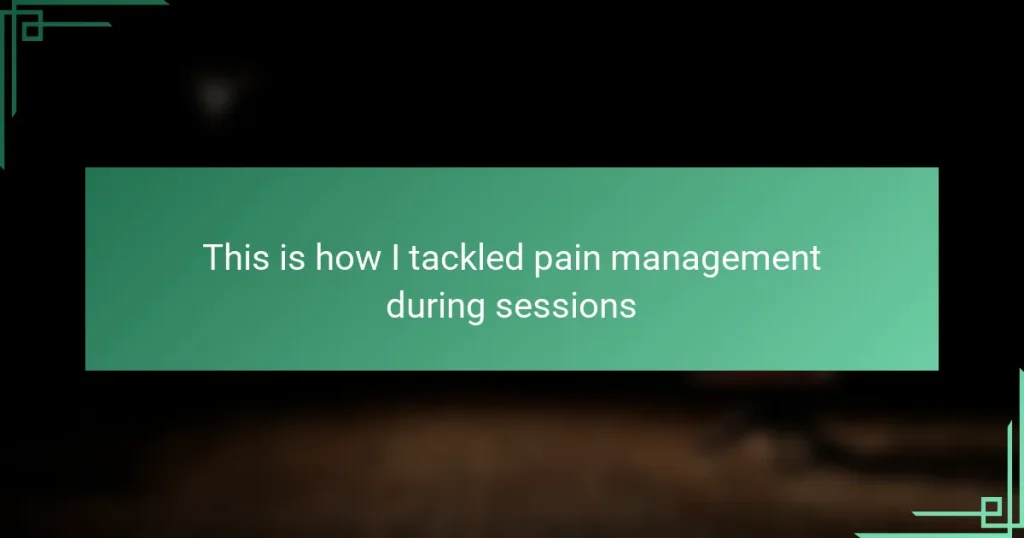Key takeaways
- Pain during tattoo sessions is subjective and varies based on location and mindset; recognizing this can aid in coping.
- Effective pain management techniques include distraction, deep breathing, and mental imagery, which can significantly alter the pain experience.
- Preparing mentally by reframing pain as progress and visualizing positive outcomes can lessen anticipatory anxiety.
- Post-tattoo care involves keeping the area clean and moisturized, using cooling techniques, and wearing loose clothing to minimize discomfort.
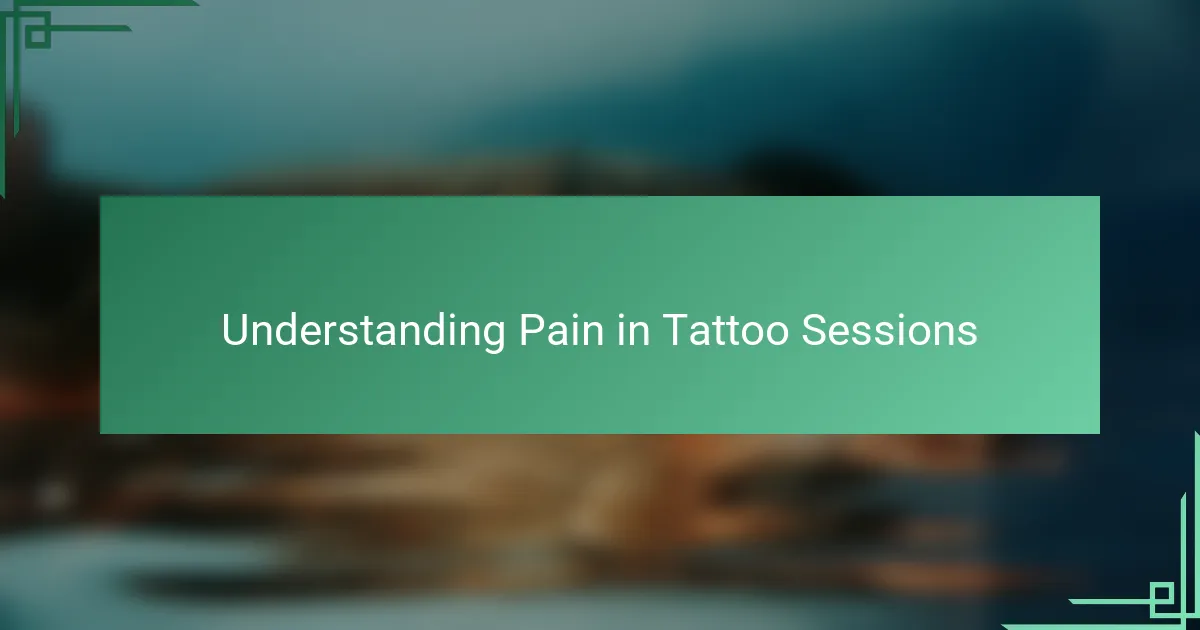
Understanding Pain in Tattoo Sessions
Pain during tattoo sessions isn’t just physical; it’s also deeply personal. I’ve noticed that the sensation varies wildly depending on the location and my own mindset at the time. Have you ever wondered why the same needle can feel so different from one spot to another?
For me, understanding this pain became a key part of preparing mentally. When I realized that pain is a signal—sometimes discomfort, sometimes a sign of progress—it helped me approach sessions with a calmer attitude. Have you tried acknowledging the pain rather than resisting it? That shift in perspective made a surprising difference.
Sometimes, the emotional layer of pain—like anticipation or anxiety—can intensify the physical experience. I recall moments when nervous excitement made my skin feel more sensitive than it actually was. Recognizing this link helped me focus on breathing and relaxation techniques, turning what felt like a battle into a shared journey with the artist.
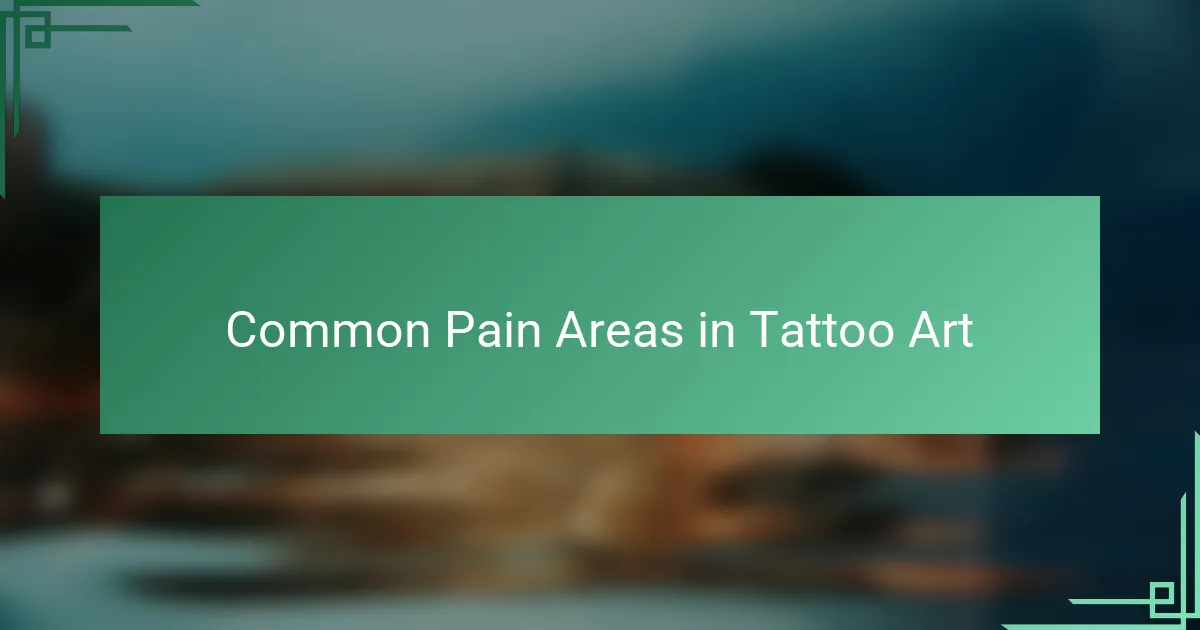
Common Pain Areas in Tattoo Art
Certain parts of the body just seem to hold onto pain differently. For me, areas like the ribs and spine always stood out as the toughest spots. Have you ever noticed how a tattoo on your ribcage can feel like a persistent sting, almost like the skin is thinner and more exposed?
I’ve also found that places with less flesh, like ankles and wrists, amplify that sharp, buzzing sensation from the needle. It’s not just about the skin but what’s underneath—bones and nerve endings playing a big role. Ever wondered why the inside of your elbow feels so raw during a session? That’s exactly why.
Interestingly, fleshy areas like the thighs or upper arms tend to be more forgiving. During my sessions, tattoos on these spots felt more like a strong scratch than anything unbearable. Does that mean pain is easier there? From my experience, yes—but it’s still personal. Your own pain threshold can flip the script entirely.
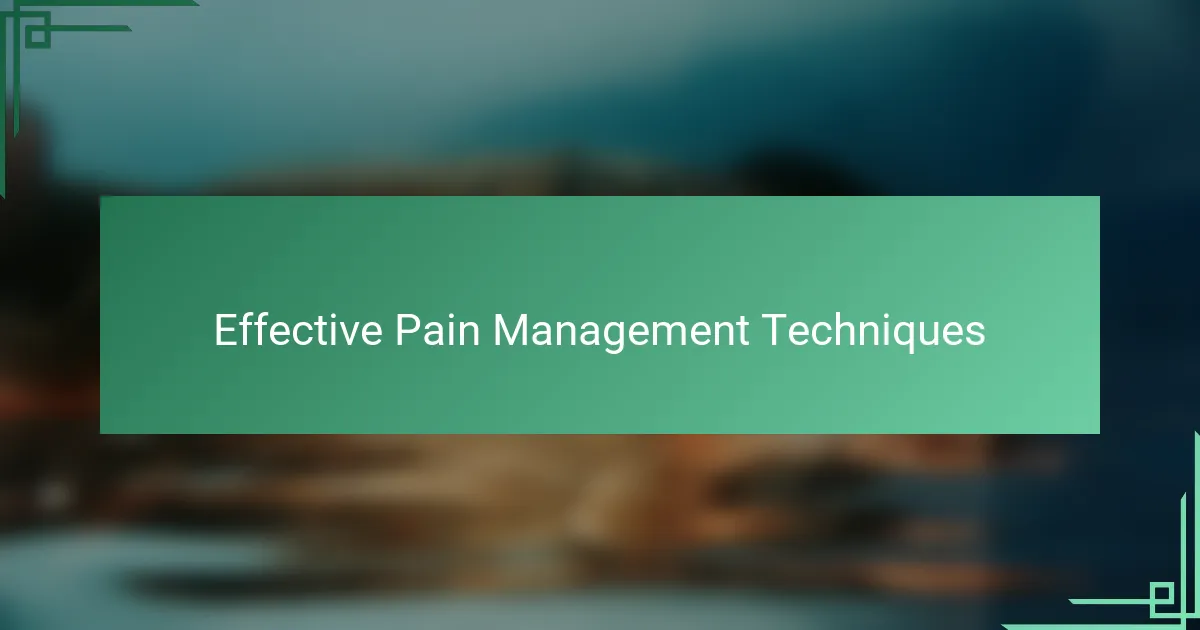
Effective Pain Management Techniques
When it comes to managing pain during tattoo sessions, I’ve found that distraction is one of the simplest yet most effective techniques. Listening to music or chatting with the artist can really take my mind off the needle’s buzz. Have you tried focusing on something else to ease that sting? It’s amazing how much a little shift in attention can lower the discomfort.
Deep breathing has also been a game-changer for me. Whenever I start feeling overwhelmed, slowing down my breath helps calm both my body and mind. I remember one session where I was so tense that every poke felt sharper until I consciously paused to breathe deeply—it made a world of difference. Do you think something as simple as breathing could actually change your pain experience?
Lastly, I sometimes use mental imagery to cope with the sensation. Imagining a cool breeze or a gentle wave washing over the tattoo area brings a surprising sense of relief. It might sound a bit unusual, but this little mental trick turns the pain into something more manageable. Have you ever tried “tricking” your brain this way during a tough moment? From what I’ve learned, these small techniques compound and make a session much more bearable.
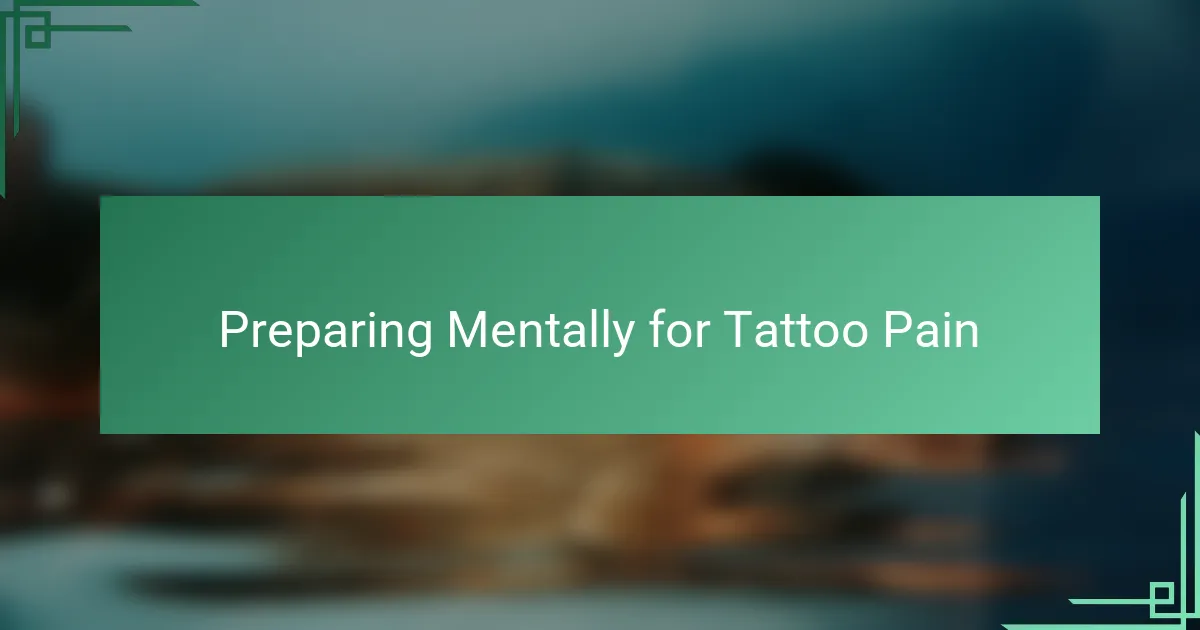
Preparing Mentally for Tattoo Pain
Preparing mentally for tattoo pain was a game changer for me. I remember sitting down before a session, consciously telling myself that the discomfort was temporary and part of the creative process. Have you ever tried framing pain as progress rather than something to fear? For me, this mindset shift helped lessen the dread I’d usually feel.
I also find that visualizing a positive outcome calms my nerves. Sometimes, I picture how proud I’ll be when the tattoo is done, which makes the little stings feel more like stepping stones than obstacles. Isn’t it interesting how our thoughts can transform physical sensations?
One tricky part is managing anticipation—those moments before the needle starts. I used to get caught in a loop of “what if it hurts too much,” which only made the pain worse once the session began. Now, I focus on steady breathing and remind myself that I’ve handled this before. Doesn’t taking control of your thoughts make the whole experience feel a bit less daunting?
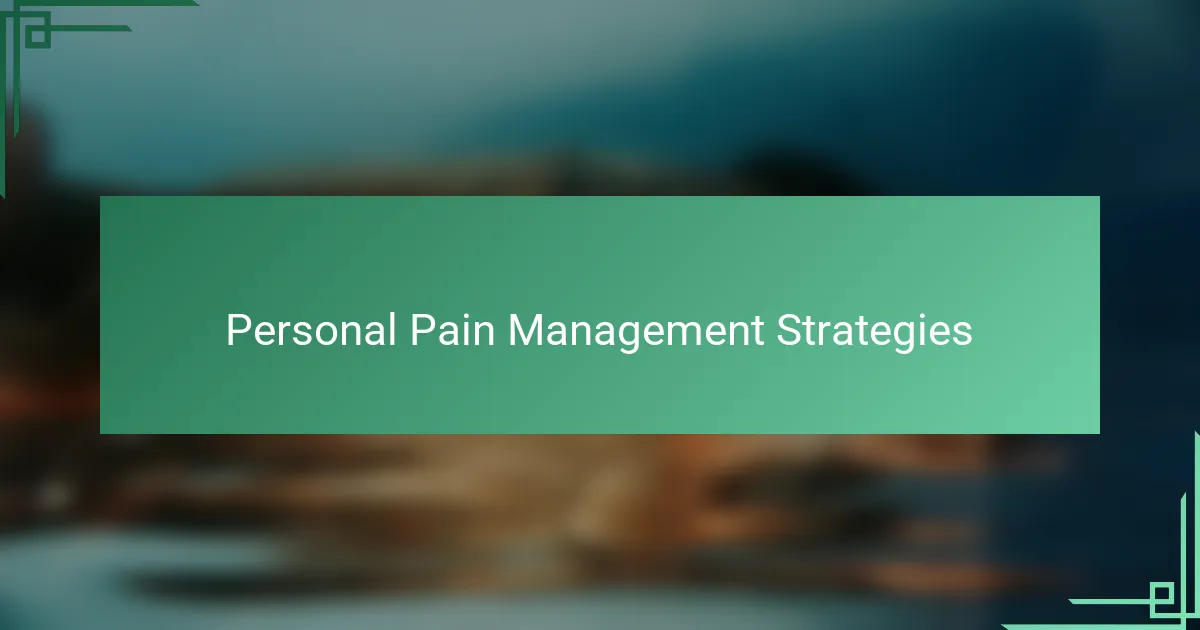
Personal Pain Management Strategies
When it comes to personal pain management, I’ve learned that pacing myself during sessions is crucial. Taking short breaks when the discomfort builds up lets me reset physically and mentally. Have you ever noticed how a brief pause can make the next round feel less intense? For me, those moments of rest became little relief pockets amid the buzzing.
I also discovered that staying hydrated and well-nourished before a session helps my body cope better with pain. It sounds simple, but I was surprised at how much difference it made in my overall endurance. Have you ever walked into a session feeling drained, only to regret not preparing your body properly?
Finally, I rely on communicating openly with my artist about my pain levels. Speaking up when things get tough doesn’t mean you’re weak—it actually empowers you to find a better rhythm or adjust pressure. Have you found that sharing how you feel creates a collaborative atmosphere rather than just enduring silently? From my experience, it turns the session into a real team effort.
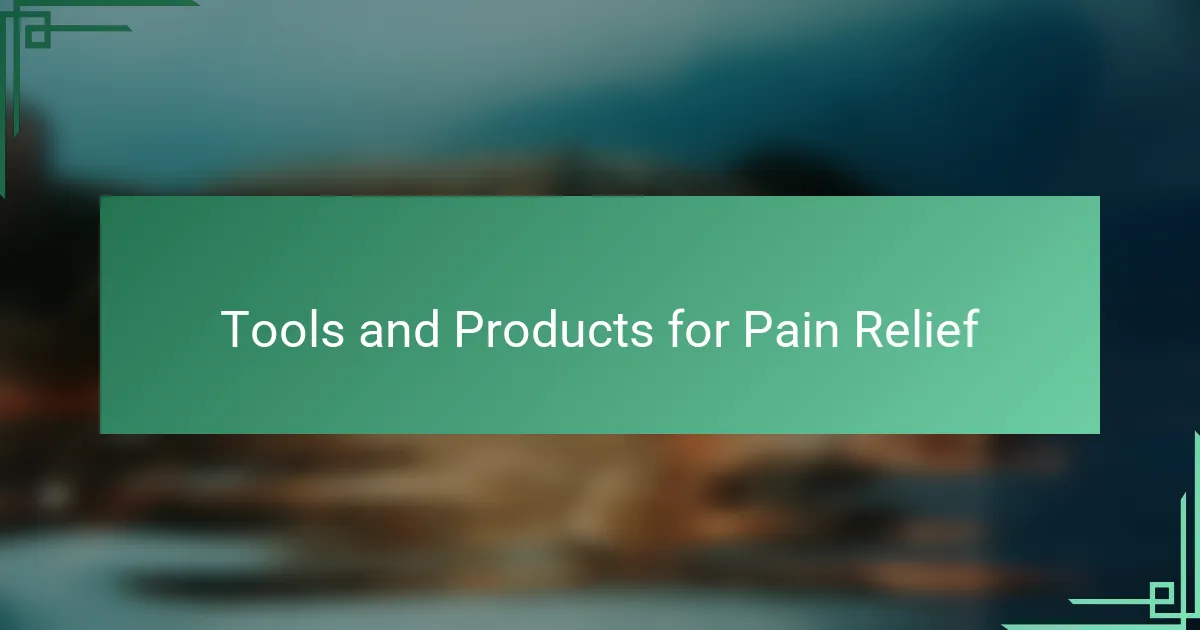
Tools and Products for Pain Relief
One tool that really helped me was a numbing cream recommended by my tattoo artist. At first, I was skeptical—could a cream actually dull the sting? But applying it before the session softened that sharp buzz on sensitive spots like my ribs. It wasn’t a magic fix, but it definitely made the discomfort more manageable. Have you ever tried something topical to take the edge off?
In addition to creams, I started using cooling gels right after breaks. That icy sensation gave me a brief reprieve and distracted from the lingering soreness between tattooing rounds. I remember how refreshing it felt, almost like a reset button for my skin. Doesn’t something as simple as a cool touch feel like a small victory when you’re working through pain?
Then there are the more familiar tools like vibration devices, which some artists use to mask pain by saturating nerve signals. I haven’t personally used them, but hearing how they can ease the sting made me curious. Could combining these with other products give a synergistic effect? Exploring these options might be worth it if you’re preparing for longer sessions.
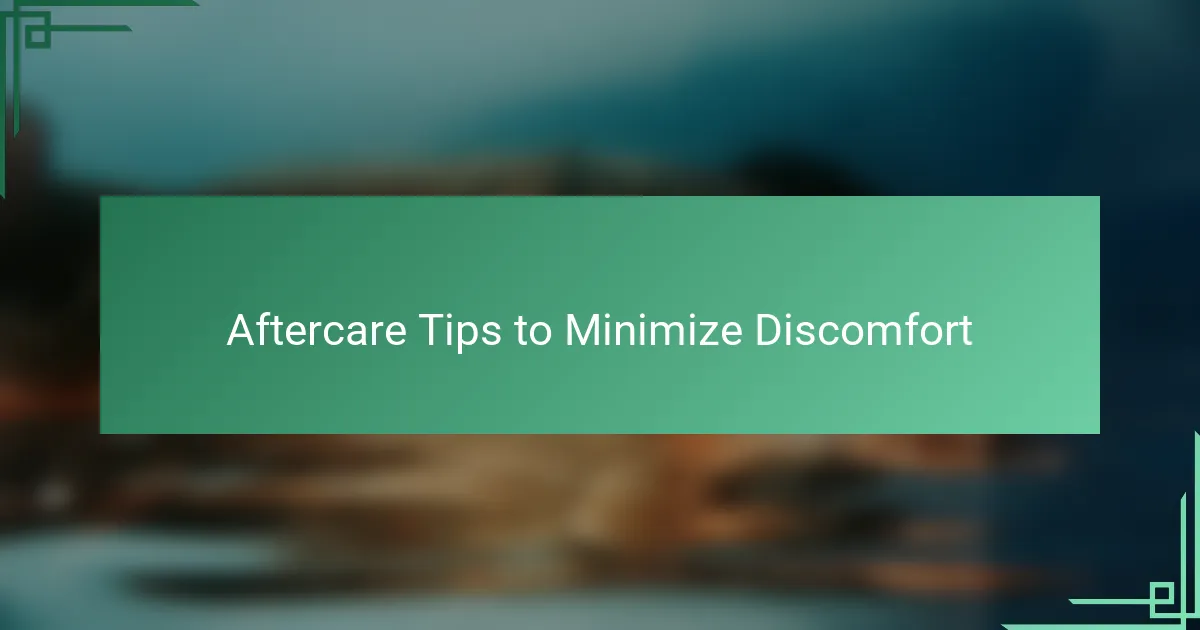
Aftercare Tips to Minimize Discomfort
One thing I can’t stress enough when it comes to aftercare is keeping the tattoo clean and moisturized. I remember once neglecting to apply ointment properly, and the discomfort skyrocketed—it felt sore and itchy for days. Have you ever experienced that annoying tightness when a tattoo starts to dry out? Regularly moisturizing with a fragrance-free lotion really helped me keep that feeling at bay.
Cooling the area gently with a damp, cool cloth was another game-changer for me during the first couple of days. It’s amazing how a simple cool touch can reduce redness and numb the slight pain without any products. Have you tried this? It’s a soothing way to signal your skin that it’s safe to relax and heal.
Lastly, I learned to avoid tight clothing over the fresh tattoo. Initially, I didn’t think much of it, but once I realized how friction amplified my discomfort, changing into loose fabrics became a small but crucial step. Isn’t it interesting how these little adjustments can make a big difference in your healing journey?
